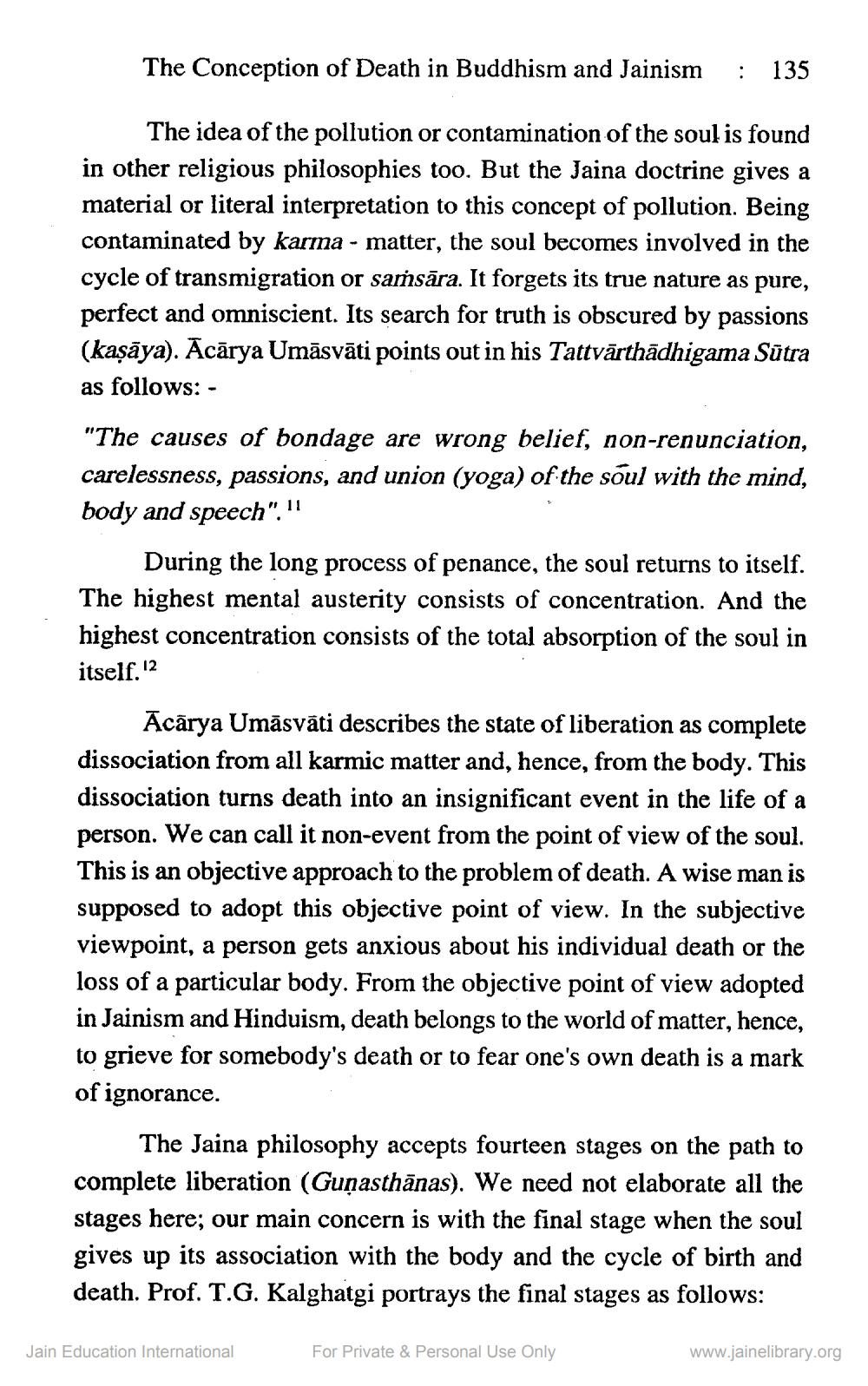________________
The Conception of Death in Buddhism and Jainism
: 135
The idea of the pollution or contamination of the soul is found in other religious philosophies too. But the Jaina doctrine gives a material or literal interpretation to this concept of pollution. Being contaminated by karma - matter, the soul becomes involved in the cycle of transmigration or saṁsāra. It forgets its true nature as pure, perfect and omniscient. Its search for truth is obscured by passions (kaşāya). Ācārya Umāsvāti points out in his Tattvārthādhigama Sūtra as follows: - "The causes of bondage are wrong belief, non-renunciation, carelessness, passions, and union (yoga) of the soul with the mind, body and speech"."
During the long process of penance, the soul returns to itself. The highest mental austerity consists of concentration. And the highest concentration consists of the total absorption of the soul in itself.2
Ācārya Umāsvāti describes the state of liberation as complete dissociation from all karmic matter and, hence, from the body. This dissociation turns death into an insignificant event in the life of a person. We can call it non-event from the point of view of the soul. This is an objective approach to the problem of death. A wise man is supposed to adopt this objective point of view. In the subjective viewpoint, a person gets anxious about his individual death or the loss of a particular body. From the objective point of view adopted in Jainism and Hinduism, death belongs to the world of matter, hence, to grieve for somebody's death or to fear one's own death is a mark of ignorance.
The Jaina philosophy accepts fourteen stages on the path to complete liberation (Gunasthānas). We need not elaborate all the stages here; our main concern is with the final stage when the soul gives up its association with the body and the cycle of birth and death. Prof. T.G. Kalghatgi portrays the final stages as follows:
Jain Education International
For Private & Personal Use Only
www.jainelibrary.org




